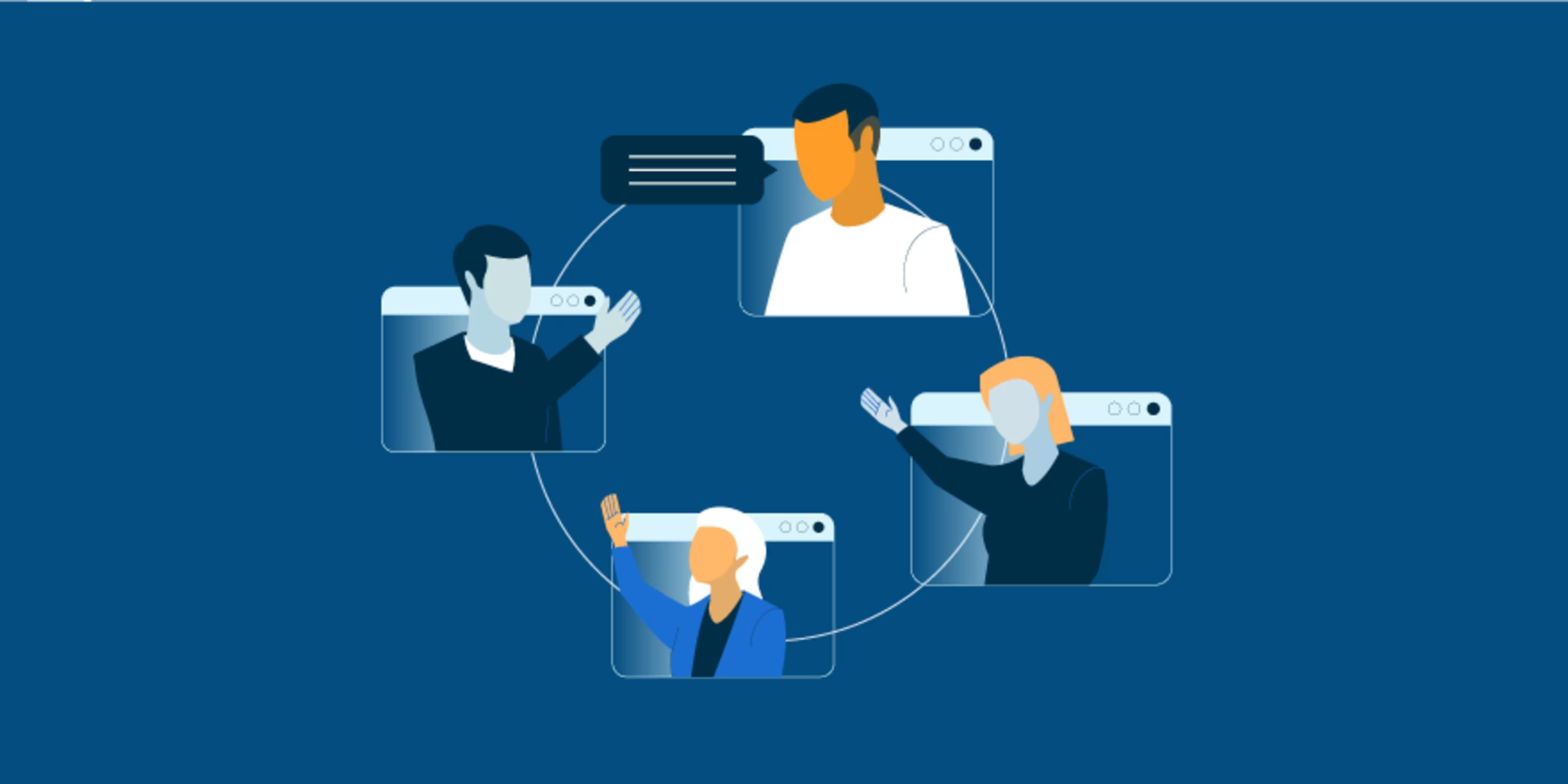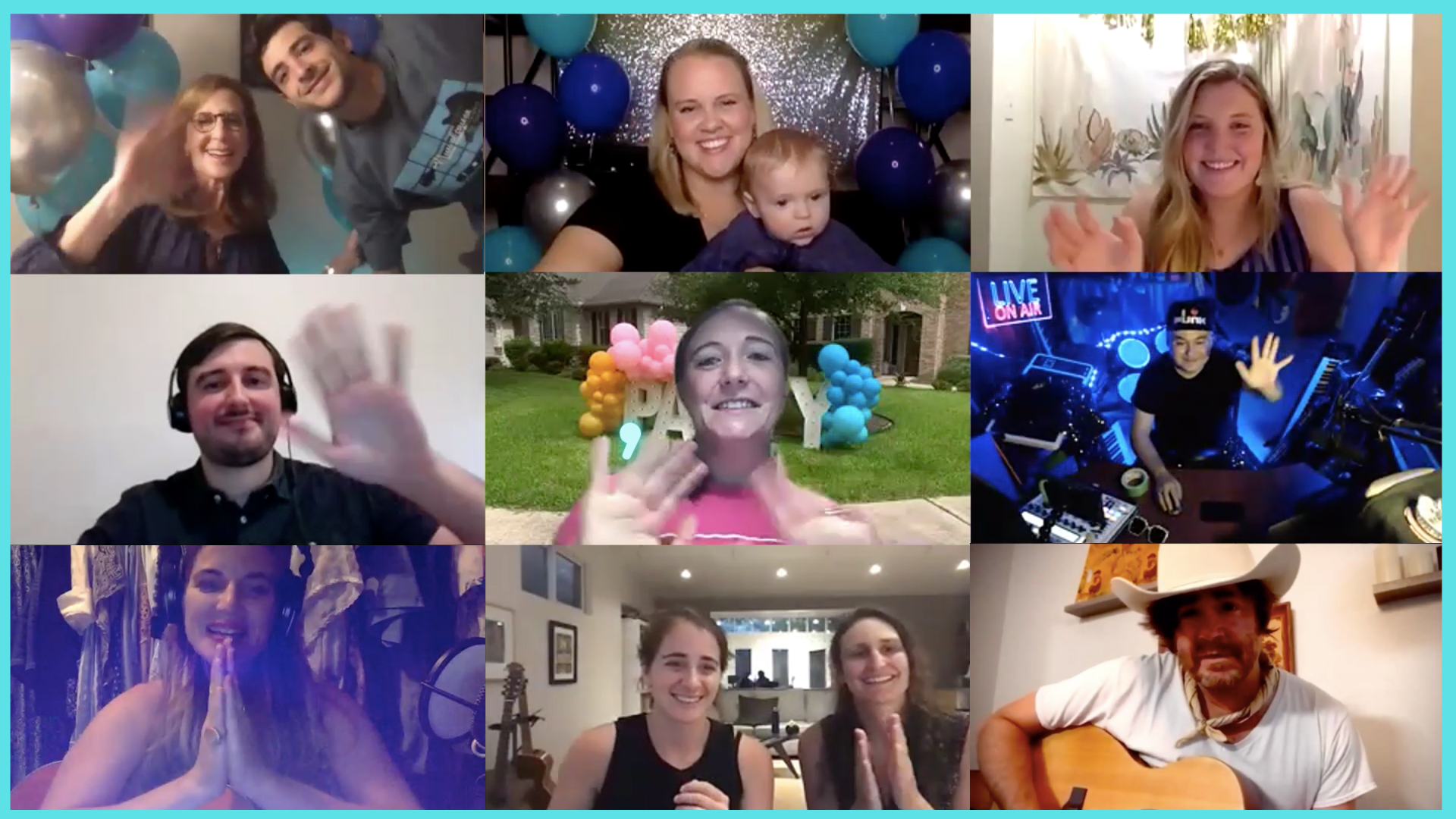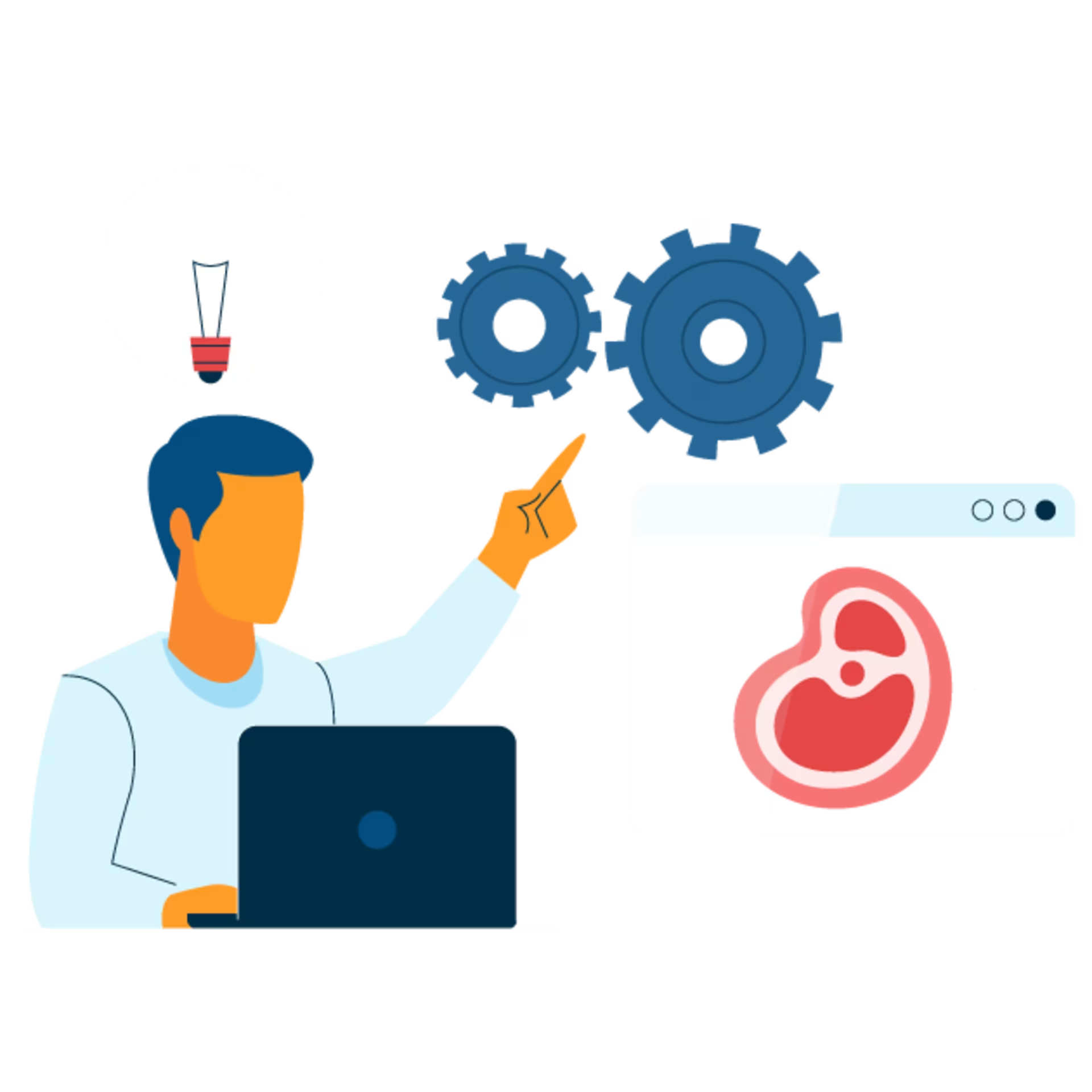Power for Parkinson’s had to figure out how to help people living with Parkinson’s manage their symptoms while quarantining. Technology helped grow the nonprofit's distant audience, but it’s still working on engaging locals.

The exercise instructor welcomed the class and asked them to lift their hands and spread their fingers wide. Then, the class lifted their arms over their heads, took a deep breath in, and shouted the letter “E” as loudly as they could while exhaling. The class sustained the sound for 25 seconds, harmonizing with their neighbors as they lowered their arms.
This exercise was part of the warm up for one of Power for Parkinson’s classes designed for people with Parkinson’s disease to help them manage vocal symptoms such as speech slur and softening, and physical symptoms such as motor loss.
Group balloon exercise (Source: Power for Parkinson's)
Dr. Nina Mosier and Susan Stahl founded Power for Parkinson’s in 2013 in honor of their fathers diagnosed with Parkinson’s. Both noticed that resources for people with Parkinson’s were not very accessible—outpatient physical therapy programs are typically short-term, expensive, and difficult for patients to maintain upon completion.
“A lot of times, insurance does help with [cost],” said Maggie Moore, a program coordinator at Power for Parkinson’s. “But for people with lower income or who don’t have access to insurance, these [short-term programs] may not even be an option.”
What was lacking for people living with Parkinson’s were free, ongoing resources to help them manage their symptoms long-term, a gap Power for Parkinson’s sought to fill.
When the world stops, software can help you keep moving
Before COVID-19, Power for Parkinson’s offered 13 weekly exercise classes to people in Austin, Texas with Parkinson’s. When the pandemic hit the city, the nonprofit could no longer hold in-person classes.
“When we look at the average age onset [for Parkinson’s], and then we look at COVID and the most high risk population, we’re really looking at the same population,” Moore said. “Our population is the high risk COVID population.”
Power for Parkinson’s had to find new ways to connect with people quarantining with Parkinson’s who may already be prone to feelings of isolation, now compounded with social distancing orders.
“Parkinson’s doesn’t stop just because the world is stopping,” Moore said.
The organization turned to technology, growing its YouTube presence, using video software for live classes, and relying on webinar software to host its annual concert fundraiser virtually.
Digital transformation, however, isn’t always easy: Power for Parkinson’s is forming a digital equity4 ways to overcome the challenges of going digital
1. Start with what you already know
Power for Parkinson’s wanted to continue giving people with Parkinson’s access to resources during the pandemic, and didn’t want to waste much time doing it. They decided to start with what they already knew: YouTube.
It [YouTube] was always sort of a fringe part of what we were doing. When COVID came around, we were no longer able to do in-person classes, and that gave us the push we needed to take things online.
Maggie Moore
Program Coordinator
At the beginning of the year, the organization's YouTube channel had 3,500 subscribers already viewing its prerecorded exercise classes. Now, the channel has 9,320 subscribers.
Moore said they still upload pre-recorded videos, but also started live streaming on YouTube.
“We've got our instructors using smartphones, iPads, tablets, laptops—whatever they have to go live,” Moore said.
What you can do: When crises arise, think about what tools you already have available to you.
One of the first tips from small-business owners on how to survive a crisis is using social media. YouTube, Twitter, Facebook, and Instagram can play a critical role in your business continuity plan, but be sure to keep track of how your brand is performing on these platforms.
Social media monitoring software can help you measure the impact of your posts, and reputation management software can help you make sure your brand name stays healthy during external crises. If you rely on video content on social media platforms, optimize your videos so more people see them.
2. Find new ways to connect with your audience
Power for Parkinson’s exercise classes not only help participants preserve their ability to move and communicate but also give them a sense of community.
Isolation and depression are things that come along with Parkinson’s or with any chronic illness—when you wake up one day, and you’re not able to do the things that you love … depression can set in really quickly. People can combat that [isolation and depression] and find community through group fitness.
Maggie Moore
Program Coordinator
Moore said they wanted to find a way to preserve a sense of community with the people they serve. The organization decided to use web conferencing software to hold live classes and social events. For example, every Thursday, they hold a live dance class using Zoom, which allows participants to interact and connect with one another more so than on the YouTube platform.
“You’re reaping so many benefits from the community and social aspect [of group fitness] from seeing other people who are dealing with the same sort of afflictions,” Moore said.
What you can do: By going digital, you can find new ways to connect with your customers.
If you’re new to software, it’s OK to start small. Try starting with live streaming software to connect with clients, or collaboration software to connect remote teams. If you need in-depth guidance, download our 2020 business digitization guide to start navigating the process.
And no matter your industry or software needs, look for inspiration from other small-business owners facing the same challenges as you. For example, learn how software helped this nonprofit continue its mission or find how this architect used software in her pivot strategy, and apply their strategies to your own business.
3. Go digital with fundraising events to keep people safe
As a nonprofit, Power for Parkinson’s relies on grants and donations to keep running. Before COVID-19, Moore says most fundraising efforts were participant-led.
We have gotten grants here and there, but we don’t have one overarching grant that funds our program. We get multiple donations throughout the year from participants and community members. When we’re not as in front of people and when they’re not coming to our classes every day, that’s definitely a challenge.
Maggie Moore
Program Coordinator
One of their top fundraising priorities is an annual concert benefit they’ve hosted for the past five years. This year, they’ve had to pivot. They first considered hosting a drive-in concert (where concert-goers could remain safe in their cars), but decided the risk wasn’t worth it.
Ultimately, they decided that hosting the concert via Zoom was the best and safest option. The concert featured seven bands playing a variety of music, each performing from their own stages.

Power for Parkinson's annual concert benefit gone virtual (Source: Power for Parkinson's)
They sold tickets through their donation management system, Donor Perfect, imported the list of attendees, and then emailed each a unique link to access the event. Local participants were able to pick up a party kit containing cupcakes, cocktail mixes, and sparkling water to enjoy during the event.
What you can do: Not being able to see people face-to-face and remind them that you exist can disrupt fundraising efforts—but software can help!
If you’re new to fundraising software, check out this list of free and open source options to try.
Virtual fundraising can look similar to traditional fundraising. Use this checklist to keep your team on track; just think of your webinar platform as your venue. If you're overwhelmed by the sheer number of webinar software solutions out there, cut through the noise by understanding the exact features you’re looking for with this webinar software buyers guide.
4. Keep digital equity in mind—are your online resources as accessible as you think?
Power for Parkinson’s was able to use technology to continue its programming, but they noticed some people who frequented in-person classes were not attending virtual ones.
One of the other challenges that we have working with an older population is they’re not digital natives. They are not as technologically savvy as some younger folks that grew up with all of this technology.
Maggie Moore
Program Coordinator
The organization realized that while going digital helped make their classes accessible in some ways, it also made them less accessible to folks who aren’t comfortable with technology. To fix this, they applied for and received a Grant for Technology Opportunities through Austin’s Digital Inclusion Program. This grant promotes digital equity and helps nonprofits increase internet accessibility and technology skills.
To help their community gain access to their online classes, Power for Parkinson's is doing outreach to local participants, calling them to inform them of their online classes and asking if they need help accessing these resources.
What you can do: Ask yourself: Is your digital strategy overlooking someone? And if you are, what can you do about it?
Wherever you’re located, check with local and state governments and organizations to see what grants and resources are available to you. The Digital Equity Act of 2019 allocated funding to every U.S. state, the District of Columbia, and Puerto Rico to fund projects that would create greater accessibility to online resources and technology.
Major cities such as Seattle, Boston, and Austin offer grants to organizations and nonprofits seeking to help their populations become productive members of an increasingly digital society.
Grant management software can help you research, apply for, and manage grants. If you're unsure where to start, check out this buyers guide.
Technology and software can help you keep going
When a crisis hits, you have to keep going, especially when people's wellbeing is counting on it. Technology and software can help you get there, but adapting to the new, digital normal is not without challenges.
Whether you’re just starting to go digital with your business strategy or thinking critically about the long-term success of your business, we’re here to help.
You’ve got this, and we’ve got you.
Learn how your peers are overcoming adversity
Find out how others in the Capterra community are using technology to overcome challenges and learn from one another. We’re in this together.
